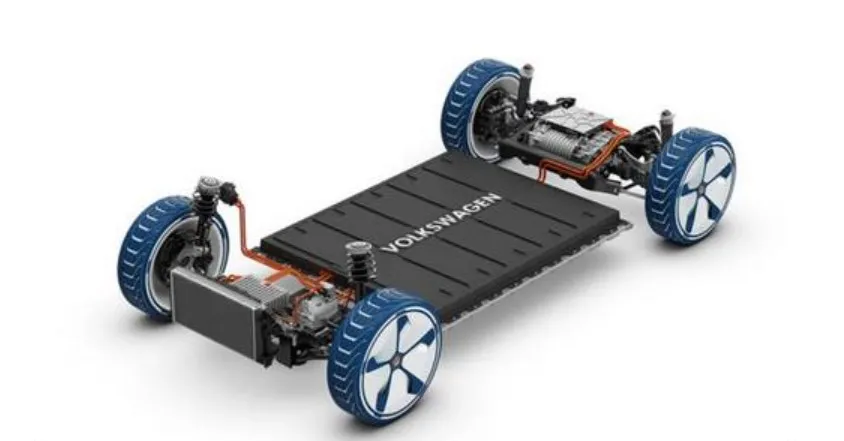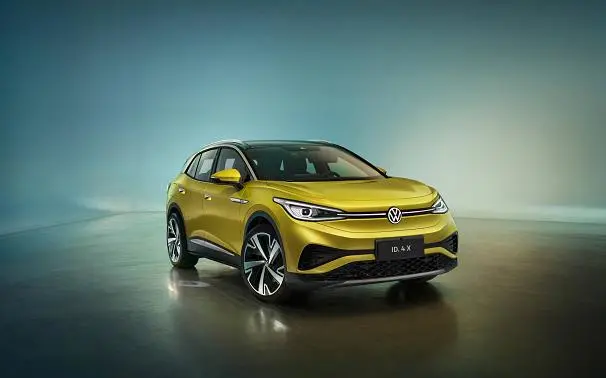On March 25th, SAIC Volkswagen’s first pure electric SUV on the MEB platform, the ID.4 X, was launched with six models ranging from RMB 199,888 to RMB 272,888 after comprehensive subsidies, marking the opening of SAIC Volkswagen’s electric vehicle era. Compared with the previously oil-to-electric Lavida pure electric model and several plug-in hybrid models, the ID.4 X has undergone a significant transformation in product power. Also based on the MEB platform, the ID.3 was just released after its launch in Europe in the second half of last year, forming a confrontation with the Model 3, with its product power and brand influence visible. The success of the ID.3 has raised expectations for the success of the ID.4 X.
However, why is the ID.4 X a battle that SAIC Volkswagen cannot lose? SAIC Volkswagen is currently at a crossroads. In 2020, Volkswagen’s performance was significantly weaker than the overall market performance. From external factors, the sinking of luxury brands and the upward push of independent brands have posed increasing challenges and competition to the Volkswagen brand, especially the Skoda brand; and many of SAIC Volkswagen’s main sales models urgently need to be updated, and the lack of competitive electric car models has made SAIC Volkswagen experience a relatively difficult adjustment period. With Volkswagen’s deep participation in JAC Motors’ mixed reform, and holding more than 75% of the equity of JAC Volkswagen in the future, Volkswagen’s advantageous resources in China will inevitably tilt towards JAC Volkswagen and FAW-Volkswagen, and SAIC Volkswagen will have to face the difficult task of taking on the hard bone. If the compact SUV ID.4 X, positioned as a high-volume model, cannot achieve good sales results, it will be a significant blow to the morale of SAIC Volkswagen.
With outstanding product power, the ID.4 X aims to define a new benchmark in the subdivided market. The ID.4 X has a length of 4612mm, a width of 1852mm, a height of 1640mm, and a wheelbase of up to 2765mm. Its rear seat experience is also excellent among compact SUVs. In terms of appearance, the ID.4 X also sweeps away the mediocre styling of Volkswagen’s past models and embodies youth, fashion, and technology through the latest electric car design language of the Volkswagen brand, from the outside to the inside. Inside, the i-ID information combination meter and 12-inch suspended central control screen at the instrument panel are extremely futuristic and technologically appealing, becoming a major highlight of the entire vehicle. The O-mood colorful ambient light, user-friendly central channel design, and music rhythm pedal further enhance the driving pleasure.In terms of the three-electric system, SAIC Volkswagen’s ID.4 X adopts a ternary lithium battery scheme, offering two battery capacities of 57.3 kWh and 83.4 kWh respectively, with a comprehensive operating range (NEDC) of up to 402km, 555km, and 520km, which is sufficient for daily commuting needs. In addition, ID.4 X offers two driving modes, rear-wheel drive and four-wheel drive, and the maximum power is between 125 kW and 225 kW. Among them, the rear-wheel drive model adopts a permanent magnet synchronous motor developed by Volkswagen, with a peak torque of 310Nms; the four-wheel drive model introduces an AC asynchronous motor outside the rear motor, with a peak torque of 460Nm and abundant vehicle power.
In terms of charging time, the ID.4 X can use DC fast-charging technology, which can drive about 100km in just 10 minutes, and only takes 30 minutes from 30% to 80% battery capacity. Even with AC slow-charging mode, the shortest time is only about 8 hours, which is in a relatively leading position in the sub-segment market.
In terms of intelligent cockpit, ID.4 X is equipped with AR-HUD augmented reality head-up display, which can project driving information and road navigation information onto the front windshield, and integrate with the visual perception of the road ahead, enhancing the sci-fi experience of driving; the ID. Light voice system can emit lights of different colors in multiple scenarios such as navigation, incoming call, voice interaction, and warning, to communicate with drivers and passengers.
In terms of connected vehicles, ID.4 X is equipped with SAIC Volkswagen’s smart car connection system 4.0, combined with SAIC Volkswagen’s Super APP, which can provide car owners with a series of online services such as intelligent charging selection, intelligent navigation, intelligent entertainment, intelligent vehicle control, and intelligent travel, becoming the car owner’s mobile travel butler. Within the year, ID.4 X will also add OTA (on-the-air over the air upgrade) to optimize customer experience and ensure that vehicles are always up to date.
In terms of intelligent driving, SAIC Volkswagen is also keeping up with the times. IQ. Drive equipped with ID.4 X has reached the L2+ level of automatic driving assistance system, making driving more intelligent and safe, and maximizing the avoidance of potential traffic and collision accidents. It includes a variety of functions such as front safety assistance system, lane departure assistance, and SWA lane change assistance, providing drivers with the most thoughtful protection from both longitudinal and lateral directions.
The marketing model is beginning to change.As new brands have been selling well in China, SAIC Volkswagen has started considering transforming its traditional dealership model. In ID.4 X sales, SAIC Volkswagen is exploring a customized agency sales model. Under this model, vehicles will be sold to customers by the automaker, and the host company can offer consumers better services with transparent, uniform prices and efficient direct interaction.
Accompanying the agency sales model is a digital city showrooms spread throughout the core cities’ CBD to help SAIC Volkswagen build new retail formats. Currently, city showrooms have opened in Hangzhou, Chengdu, and Changsha. In the next year and a half, SAIC Volkswagen will deploy 40 showrooms in 29 key cities to offer customers more and more stylish sales touchpoints for a better sales experience.
Accompanying the agency sales model, SAIC Volkswagen also has more investment in digital marketing. On the one hand, more online advertising will greatly expand ID.4 X’s influence among young consumers. On the other hand, SAIC Volkswagen will also enrich digital applications facing users to bring efficient direct interaction. ID.Hub will collect brand information, model information, car purchasing functions, and many other modules, adding to the agency sales model. On the other hand, ID.Partners will assist users’ car purchasing processes and answer various queries through enterprise WeChat, providing one-on-one butler-like service. Additionally, ID.Angel/ID.Ambassador in WeChat’s “cloud showroom” can provide one-on-one online car presentations and real-time Q&A for consumers through video calls.
Based on the MEB platform, SAIC Volkswagen will launch a large SUV ID.6 X and a crossover pure electric vehicle in the second half of this year, along with the already-launched ID.4 X, forming SAIC Volkswagen’s pure electric product matrix. In the future, based on the scalable MEB platform, SAIC Volkswagen will continuously put more and more pure electric vehicle models into the market. Such systemic ability is something that both domestic and foreign new forces in the automotive industry, including Tesla, don’t have. By releasing new energy vehicle models, including compact to large cars, SUVs, sports cars, two-door cars, station wagons, and even MPVs, SAIC Volkswagen can quickly build a relatively complete new energy vehicle model matrix and most effectively satisfy different consumers’ car ownership needs, becoming an unignorable force in China’s new energy vehicle market.
Apart from SAIC Volkswagen, Volkswagen’s Power Day, as well as SSP platform and the two projects, Trinity and Artemis based on SSP platform, have shown the major efforts Volkswagen has made in the era of new energy vehicles, intelligent connected vehicles and software-defined vehicles to global consumers. As an important joint venture of Volkswagen in China, these forward-looking technologies of Volkswagen will also radiate to SAIC Volkswagen in the future, helping SAIC Volkswagen to improve its product competitiveness.
Final Words
For SAIC Volkswagen, it is equally urgent to enhance its own R&D capabilities while importing Volkswagen’s platform technology. With the opening up of the domestic joint venture share ratio, in addition to their existing manufacturing bases and sales networks, stronger local development capabilities are also an important aspect to prove their value if joint ventures want to stand firm in the domestic market in the future. We hope that in the future SAIC Volkswagen’s press conferences, in addition to Volkswagen’s models appearing, there can also be more breakthroughs in the new four modernizations field of SAIC Volkswagen that can be shown before us. Only with breakthrough capabilities in underlying technologies such as battery cells, chips, and software platforms, can SAIC Volkswagen walk more firmly and confidently in the future.
This article is a translation by ChatGPT of a Chinese report from 42HOW. If you have any questions about it, please email bd@42how.com.
